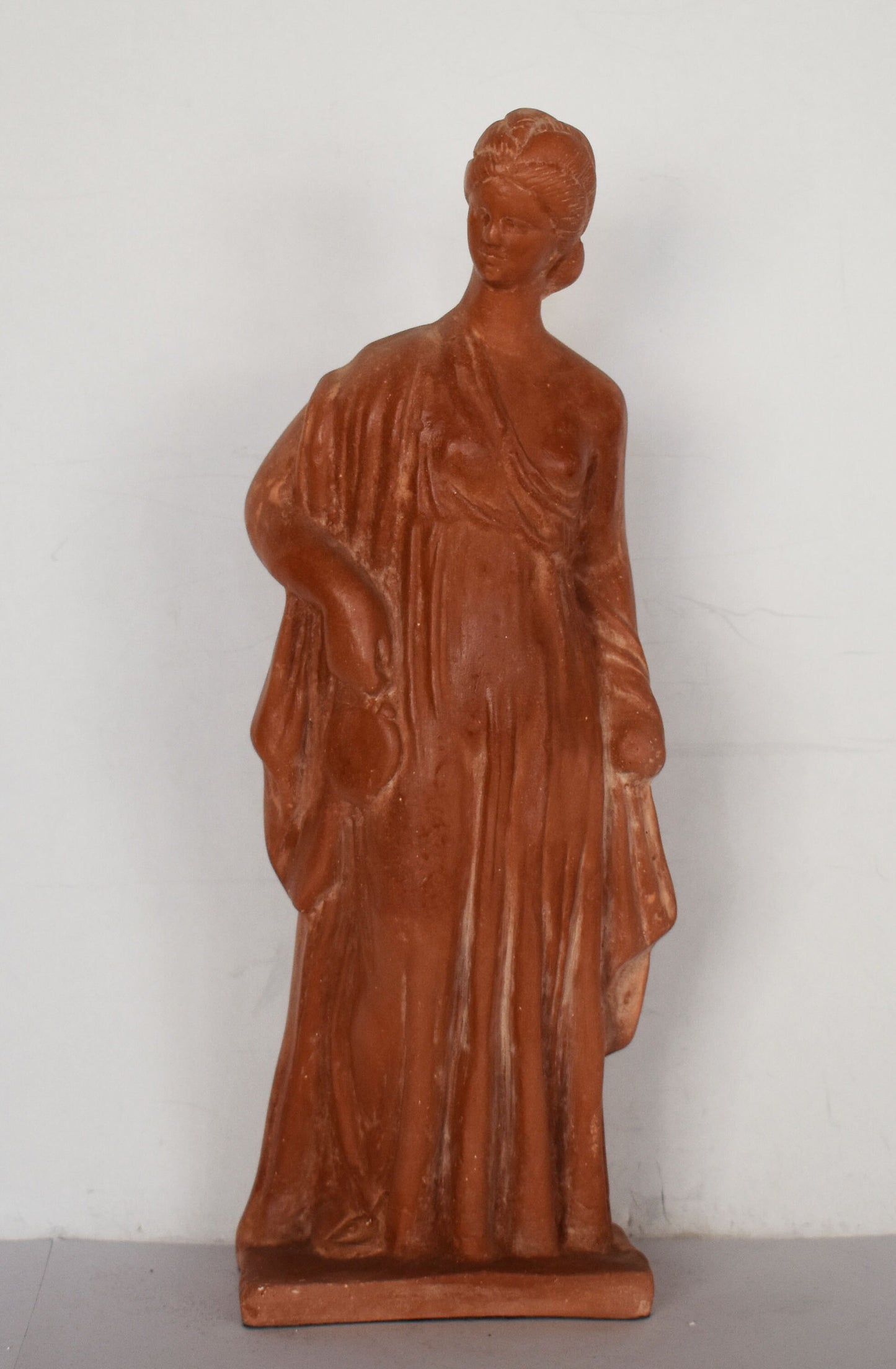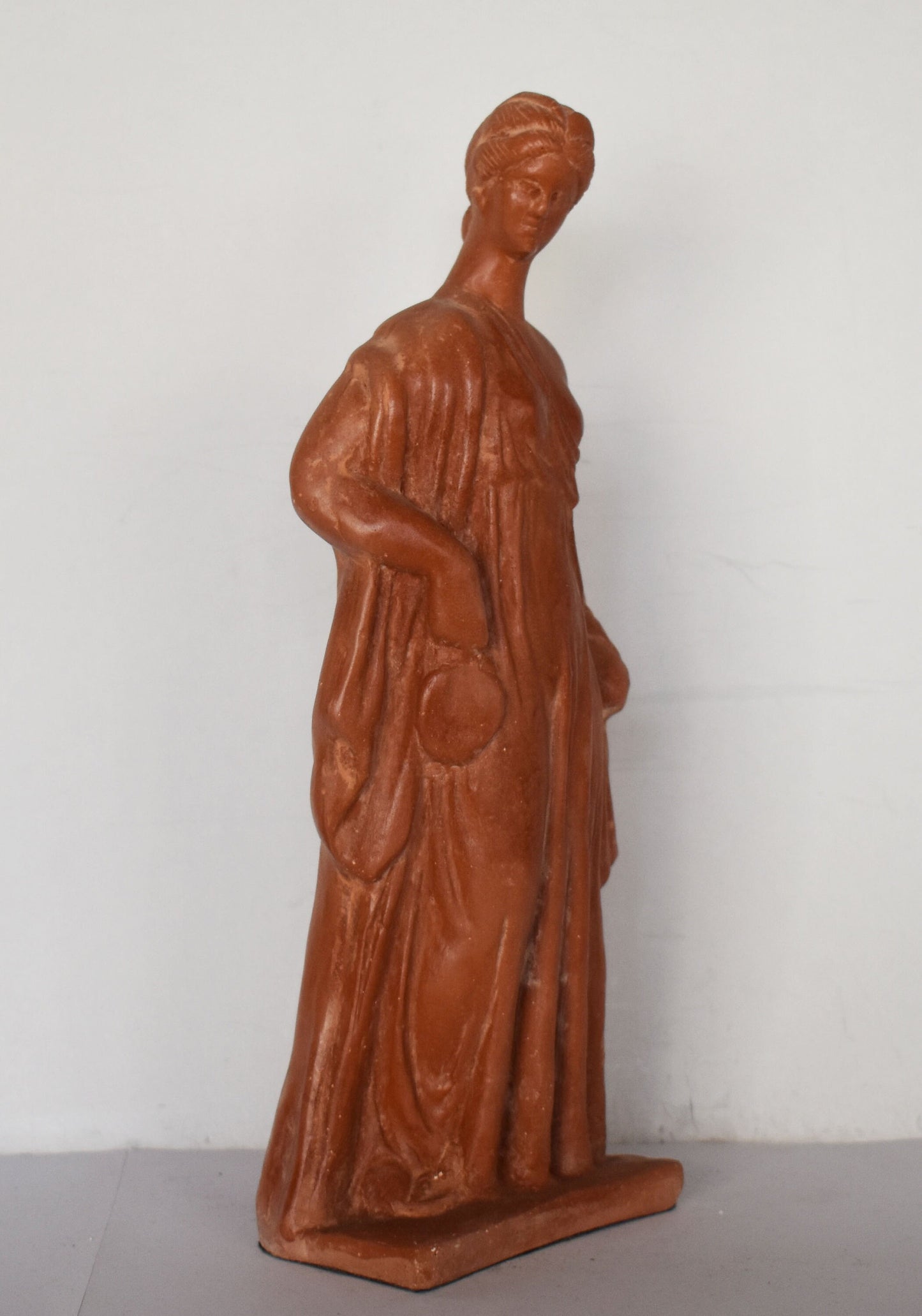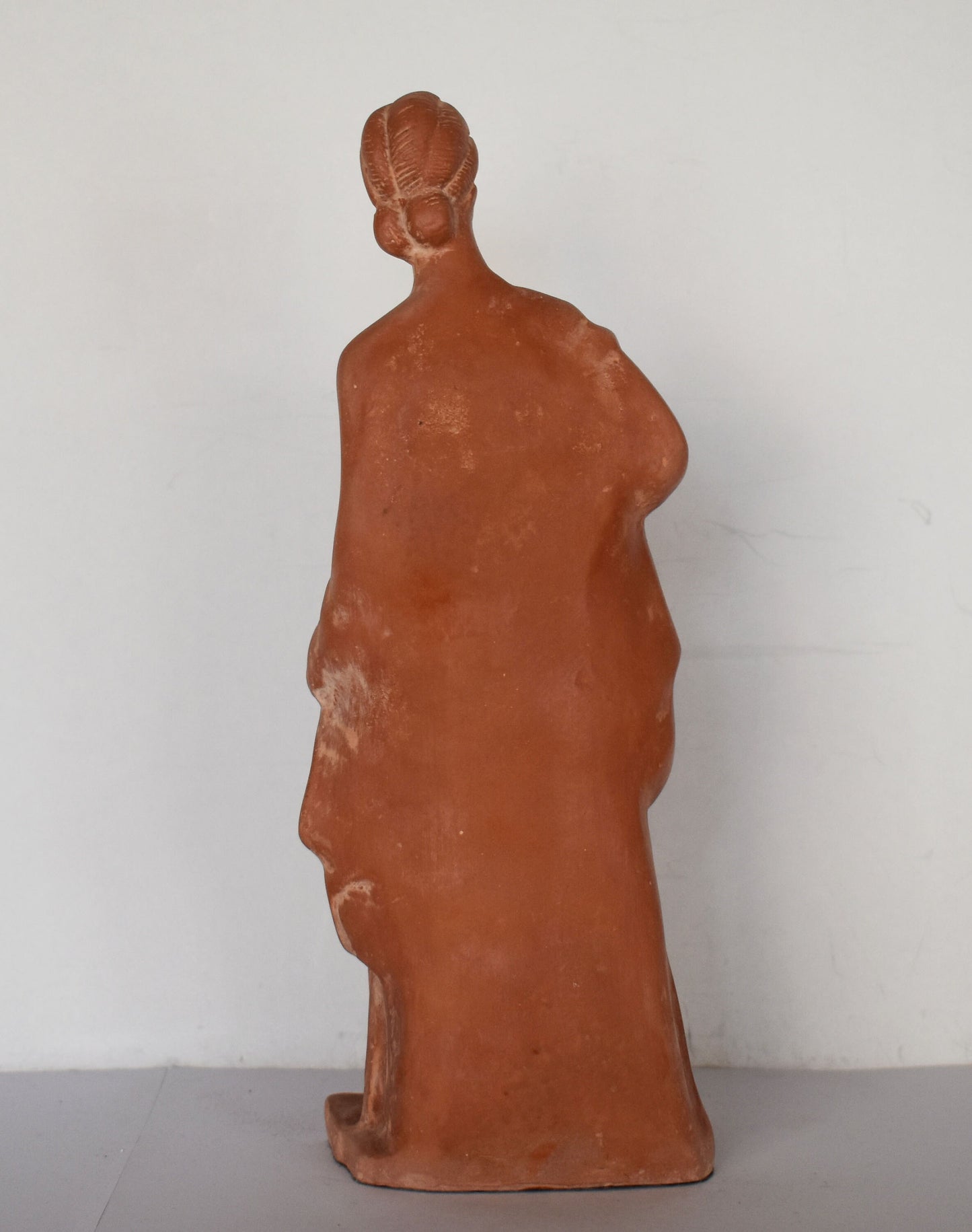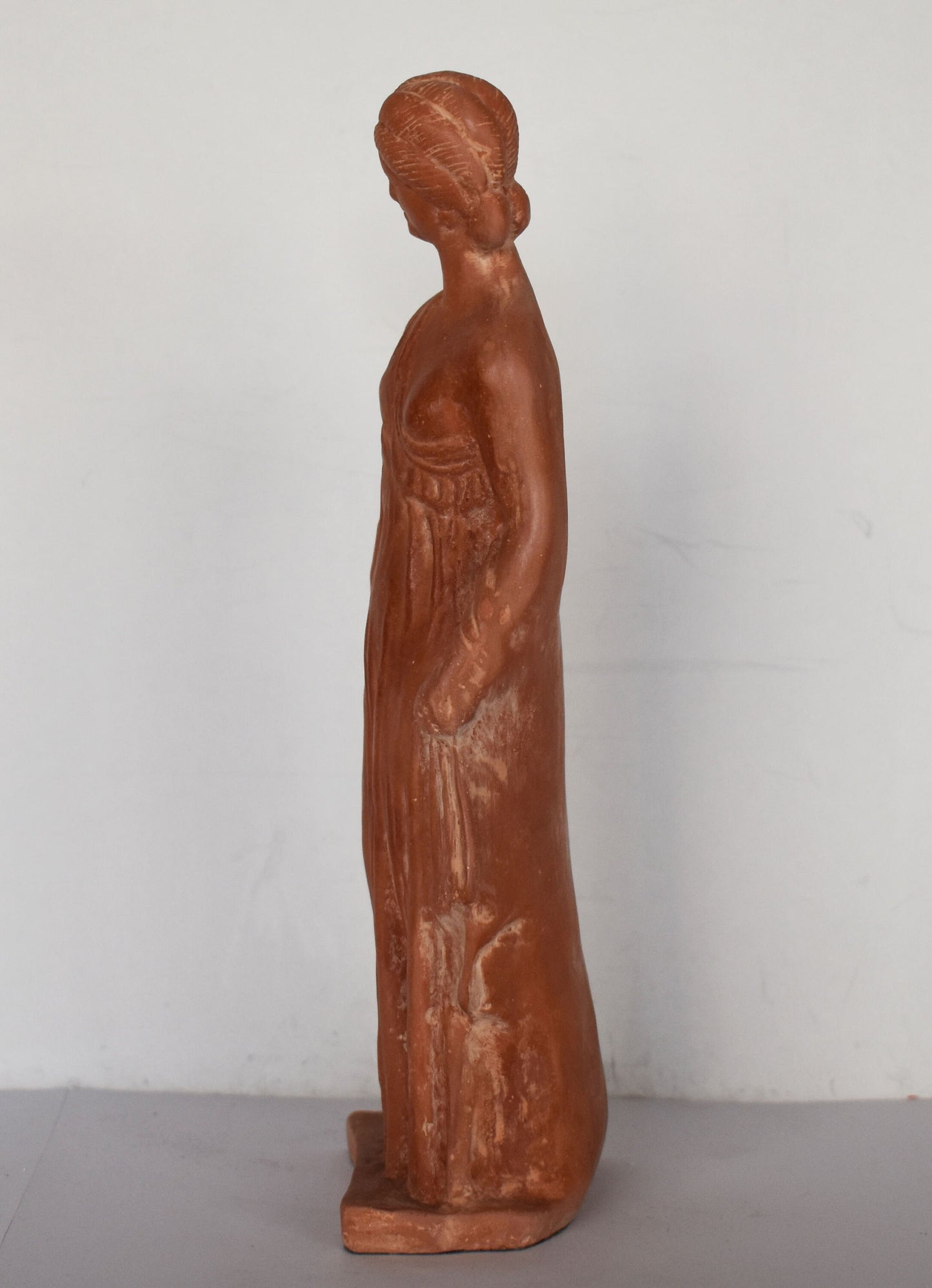Gallery Demeter
Tanagra Figurine - Votive Offering - Representations of Women and Girls in everyday Life - Museum Reproduction - Ceramic Artifact
Tanagra Figurine - Votive Offering - Representations of Women and Girls in everyday Life - Museum Reproduction - Ceramic Artifact
Couldn't load pickup availability
Details:
Condition: New, Handmade in Greece.
Height: 24 cm - 9,4 inches
Width: 8,5 cm - 3,3 inches
Length: 5 cm - 2 inches
Weight: 910 g
The Tanagra figurines were a mold-cast type of Greek terracotta figurines produced from the later fourth century BC, primarily in the Boeotian town of Tanagra, which has given its name to the whole class. They were coated with a liquid white slip before firing and were sometimes painted afterward in naturalistic tints with watercolors, such as the famous "Dame en Bleu" ("Lady in Blue") at the Louvre. They were widely exported around the ancient Greek world. Such figures were made in many other Mediterranean sites, including Alexandria, Tarentum in Magna Graecia, Centuripe in Sicily and Myrina in Mysia.
Although not portraits, Tanagra figures depict real women—and some men and boys—in everyday costume, with familiar accessories like hats, wreaths or fans. Some character pieces may have represented stock figures from the New Comedy of Menander and other writers. Others continued an earlier tradition of molded terracotta figures used as cult images or votive objects. Typically they are about 10 to 20 centimetres high.
Some Tanagra figurines were religious in purpose, but most seem to have been entirely decorative. Given Greek burial customs, they were placed as grave goods in the tombs of their owners
The coraplasters, or sculptors of the models that provided the molds, delighted in revealing the body under the folds of a himation thrown round the shoulders like a cloak and covering the head, over a chiton, and the movements of such drapery in action.
ΣΕΜ ΔΩΡΟ 8 ΑΠΑΞ ΤΑΝΑΓΡΑΙΑ - 25









